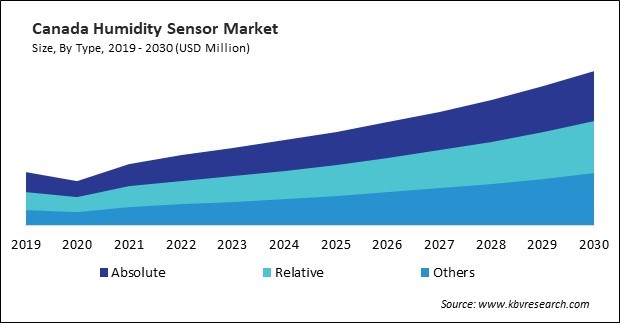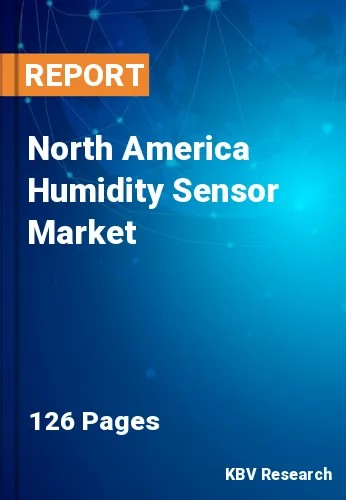The North America Humidity Sensor Market would witness market growth of 8.5% CAGR during the forecast period (2023-2030). In the year 2019, the North America market's volume surged to 786.2 thousand units, showcasing a growth of 8.5% (2019-2022).
Dehumidifiers employ humidity sensors to regulate moisture levels in indoor spaces, preventing mold, musty odors, and discomfort. Additionally, humidity sensors enhance the efficiency of air purifiers by adjusting airflow and filtration based on humidity levels, ensuring optimal air quality for occupants. In washing machines, humidity sensors aid in determining the appropriate drying cycle, optimizing energy usage, and preventing over-drying of clothes, thus offering convenience and energy savings to consumers. Therefore, the US market utilized 74.4 thousand units of humidity sensor in building automation & domestic application in 2022.

The US market dominated the North America Humidity Sensor Market by Country in 2022, and would continue to be a dominant market till 2030; thereby, achieving a market value of $476.2 million by 2030. The Canada market is experiencing a CAGR of 10.9% during (2023 - 2030). Additionally, The Mexico market would exhibit a CAGR of 9.9% during (2023 - 2030).
The humidity sensor market is marked by continuous advancements and innovations driven by technological breakthroughs and the evolving needs of end-users. A prominent trend is the miniaturization of humidity sensors, enabling their integration into compact devices such as wearables, smartphones, and Internet of Things (IoT) devices. This trend aligns with the demand for smaller, more efficient sensors that can be seamlessly incorporated into various applications.
Moreover, the rise of IoT has led to the development of smart humidity sensors interconnected within broader IoT ecosystems. These sensors can communicate with other devices, enabling centralized monitoring, data analytics, and remote control, fostering a more intelligent and responsive environment. As energy efficiency becomes paramount, the market witnesses the emergence of humidity sensors with lower power consumption. Low-power sensor technologies contribute to extended battery life in portable devices and energy-efficient operation in various applications.
Humidity sensors play a crucial role in climate control systems within vehicles. As the automotive sector in Mexico grows, there is an increased focus on enhancing the comfort of passengers. Humidity sensors contribute to maintaining optimal humidity levels inside the vehicle, preventing issues such as condensation and ensuring a comfortable environment. Thus, North America’s rising agriculture and automotive sectors can boost the demand in the regional humidity sensor market.
Free Valuable Insights: The Humidity Sensor Market is Predict to reach USD 2.3 Billion by 2030, at a CAGR of 9.2%
Based on Type, the market is segmented into Absolute, Relative and Others. Based on End User, the market is segmented into Automotive, Pharmaceutical & Healthcare, Industrial, Food & Beverages, Building Automation & Domestic Appliances, Environmental & Agriculture and Others. Based on countries, the market is segmented into U.S., Mexico, Canada, and Rest of North America.
By Type (Volume, Thousand Units, USD Billion, 2019-2030)
By End User (Volume, Thousand Units, USD Billion, 2019-2030)
By Country (Volume, Thousand Units, USD Billion, 2019-2030)
Our team of dedicated experts can provide you with attractive expansion opportunities for your business.

